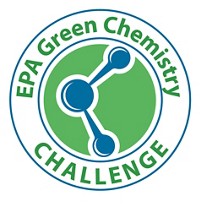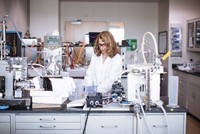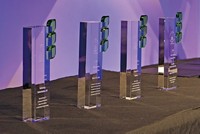Advertisement
Grab your lab coat. Let's get started
Welcome!
Welcome!
Create an account below to get 6 C&EN articles per month, receive newsletters and more - all free.
It seems this is your first time logging in online. Please enter the following information to continue.
As an ACS member you automatically get access to this site. All we need is few more details to create your reading experience.
Not you? Sign in with a different account.
Not you? Sign in with a different account.
ERROR 1
ERROR 1
ERROR 2
ERROR 2
ERROR 2
ERROR 2
ERROR 2
Password and Confirm password must match.
If you have an ACS member number, please enter it here so we can link this account to your membership. (optional)
ERROR 2
ACS values your privacy. By submitting your information, you are gaining access to C&EN and subscribing to our weekly newsletter. We use the information you provide to make your reading experience better, and we will never sell your data to third party members.
People
Green Chemistry Challenge Awards
EPA recognizes developers of technologies that are less toxic or wasteful
by Carrie Arnold
June 26, 2008

Five Teams of researchers who have developed chemical technologies that make it just a little easier to be "green"—less toxic or less wasteful—were feted on June 24 at an event honoring winners of the 13th annual Presidential Green Chemistry Challenge Awards.
Since the first challenge in 1995, award-winning environmentally friendly technologies have eliminated the need for more than 1.1 billion lb of hazardous chemicals and solvents, 21 million gal of water, and 400 million lb of carbon dioxide, according to EPA, which sponsors the honors. The prizes aim to promote the "research and development of less-hazardous alternatives to existing technologies that reduce or eliminate waste, particularly hazardous waste, in industrial production."
At an evening ceremony at the National Academy of Sciences (NAS) in Washington, D.C., EPA added five more awardees to the list of Challenge winners. Out of almost 100 entries, the agency chose winners for these five different Challenge awards: Greener Synthetic Pathways, Greener Reaction Conditions, Designing Greener Chemicals, Small Business, and Academic. This year's winners, said Dorothy Zolandz, director of NAS's Board of Chemical Sciences & Technology, show that green research is not only popular but also represents "good science and technology."
Battelle Memorial Institute received the Greener Synthetic Pathways Award for its work on biobased toners for printers and copy machines. Toner used in most printers and copiers remains difficult to remove from paper during recycling. Working with Advanced Image Resources, in Alpharetta, Ga., and the Ohio Soybean Council, chemists at Battelle developed a soy-based ink that requires less energy to remove and enables more paper to be recycled.
Nalco, in Naperville, Ill., won the Greener Reaction Conditions Award for its 3D Trasar technology to make cooling water less hazardous and more energy efficient. Water cooling systems for air conditioning and industrial processing require a variety of chemicals to manage mineral buildup, microbial growth, and corrosion. The 3D Trasar technology monitors the water in the system and adds only the necessary chemicals, saving both energy and water.
Dow AgroSciences, in Indianapolis, beat the competition for the Designing Greener Chemicals Award for developing the biopesticide spinetoram. Using an "artificial neural network," Dow AgroSciences refined its 1999 Presidential Green Chemistry Challenge-winning pesticide to combat fruit-tree pests. Spinetoram is more selective for these pests and less toxic to mammals than the organophosphate pesticides typically used on fruit trees.
SiGNa Chemistry, in New York City, received the Small Business Award for creating a porous, sandlike powder to stabilize alkali metals. This powder enables safe handling of these otherwise flammable and explosive metals while preserving their reactive capacity. Researchers at SiGNa note that the stabilized metals might also be used to clean up hazardous wastes and remove sulfur from fuels.
Robert E. Maleczka Jr. and Milton R. Smith III, of the department of chemistry at Michigan State University, won the Academic Award for designing a mild catalytic reaction to synthesize precursors for the Suzuki coupling reaction. The coupling reaction—frequently used to create carbon-carbon bonds in complex organic syntheses—is mild, but the reaction conditions to create the needed precursors are often harsh and result in hazardous waste. Sidestepping the need for toxic halides, Maleczka and Smith use an iridium catalyst to synthesize the boronic ester precursors in water with hydrogen as a by-product.
The collective work of these winners, Zolandz said, shows the benefits to society of chemists and innovators who have, in many cases, "recognized and solved problems before society has even acknowledged them."





Join the conversation
Contact the reporter
Submit a Letter to the Editor for publication
Engage with us on Twitter